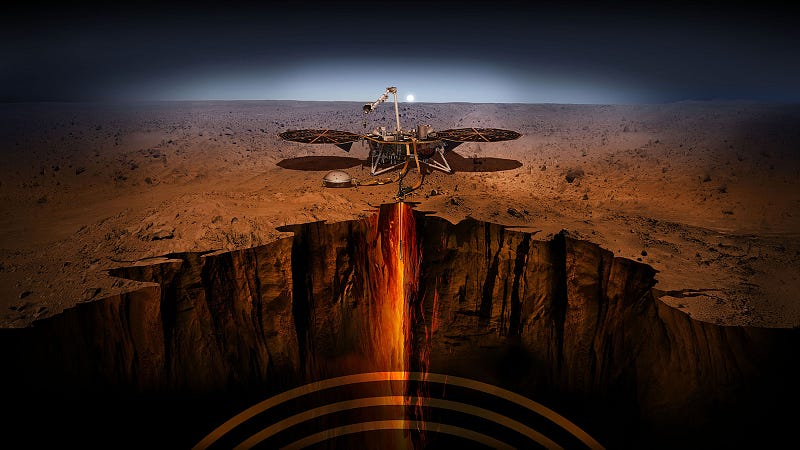Exploring Mars: InSight Mission Uncovers Planet's Seismic Activity
Written on
Chapter 1: Introduction to Mars's Seismic Landscape
Mars is often perceived as a cold and desolate world. However, beneath its surface, the planet is alive with seismic activity and geological processes. This fascinating information comes from the initial findings of NASA's InSight mission, recently published in multiple papers in Nature Geoscience and one in Nature Communications. Since its arrival at Elysium Planitia in November 2018, InSight has offered a new perspective on Mars's interior structure.
“We have definitively shown that Mars is a planet with seismic activity,” states Bruce Banerdt, the principal investigator for InSight. Its seismic events are more frequent than those on the Moon, yet less so than on Earth. “These signals are beginning to reveal the interior of Mars,” he adds.
Section 1.1: The Discovery of Marsquakes
Since the deployment of its seismometer last year, InSight has recorded 174 marsquakes, categorized into two groups: 150 minor events frequently originating from the crust and 24 stronger events ranging from magnitude 3 to 4, which likely stem from deeper within the planet’s mantle. These tremors are imperceptible to anyone on the Martian surface as they occur too far below.

In addition to the seismic data, InSight’s cameras and sensors have documented over 10,000 dust devils, which create vibrations detectable by the seismometer. These observations provide insights into the subsurface of Mars up to around 30 feet deep.
Subsection 1.1.1: The Causes of Marsquakes
While the exact cause of each marsquake remains unclear, the team believes that the cumulative data suggests these events result from the planet's gradual cooling. As Mars continues to lose heat, its brittle outer layers contract and fracture, leading to geological disturbances. Additionally, localized volcanic activity may also play a role in these seismic events.
Section 1.2: Water Within Mars's Crust
The seismic data hints at the intriguing possibility of water existing within the Martian crust. Although the team is unable to confirm the presence of substantial water reserves, they do indicate that moisture is present.
Chapter 2: Investigating Mars’s Magnetic Field
The new research focuses primarily on seismic findings but also offers a comprehensive analysis of Mars's magnetic field. Previously, measurements of the magnetic field were obtained from orbit, at altitudes of at least 150 kilometers. It is known that Mars lacks a global magnetic field today, having lost it in ancient times, which allowed solar winds to erode the atmosphere that once supported liquid water.
The first video, "MONSTER QUAKE ON MARS - NASA's InSight Records The Biggest Quake Ever Recorded on Another Planet," provides insight into the significance of these seismic findings and the implications for our understanding of Mars.
InSight’s magnetometer, the first of its kind to operate on Mars's surface, has revealed an unexpectedly stable magnetic field, ten times stronger than previous satellite observations. The magnetized rocks beneath the surface suggest conditions that may have once produced a magnetic field comparable to Earth’s.
Despite challenges with its heat probe, known as "the mole," which has been stuck at around 14 inches since its deployment, InSight is expected to continue providing valuable data for an extended period. The mission team is currently exploring various methods to help the mole penetrate deeper into the Martian soil, including using the lander’s robotic arm for assistance.
The second video, "One Day from Mars Landing: InSight Team Q&A (NASA Social)," offers a Q&A session with the InSight team, discussing the mission's challenges and discoveries.
Even without the mole, InSight has already sparked numerous questions and insights about Mars. “We have amassed a wealth of data but have not yet reached many conclusions,” Banerdt remarks. “We are truly in the early stages of understanding the complexities of this planet.”